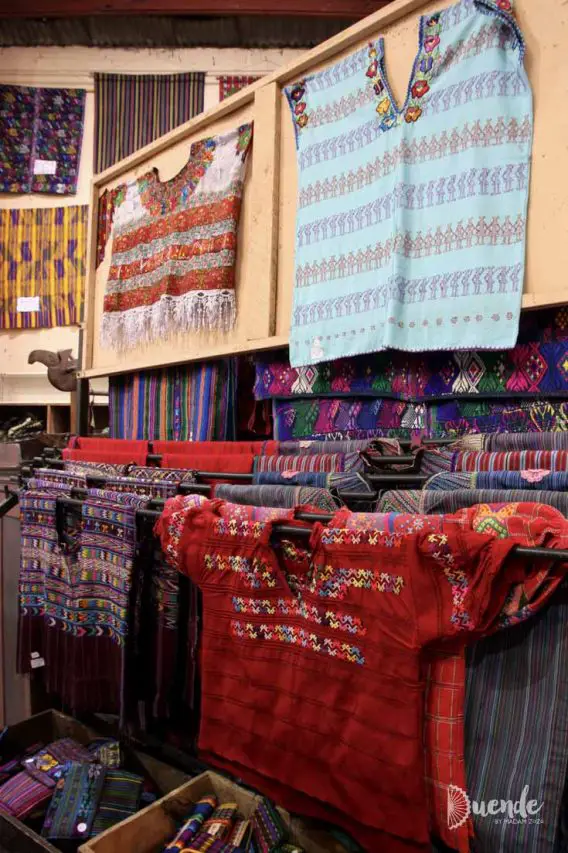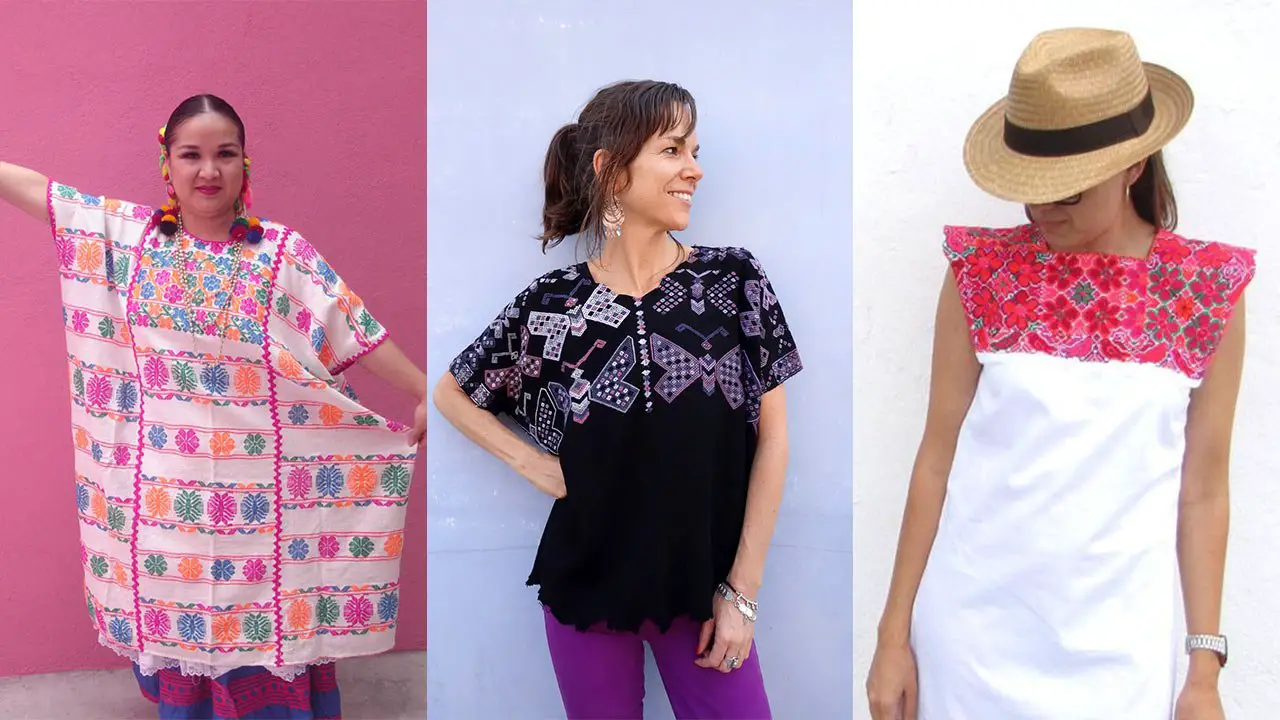Try on the Huipil (pronounced “wee-pil”), a boxy blouse usually decorated with embroidery, traditionally worn by indigenous women of Mexico and Guatemala – think Frida Kahlo! These loose, cotton pieces make cool and colourful statement pieces in your casual, summer wardrobe.
History and tradition
Huipils are simply constructed from three rectangular pieces of cloth. The fabric is dependent on the indigenous group and its location. Heavier fabrics such as wool and velvet are used in cooler, mountain regions, while cotton muslin is the material of choice in areas affected by equatorial heat. The term huipil refers to anything from a short tunic to a longer dress-length piece.
The embroidered decoration is symbolic, conveying family and village identity, along with the marital status of the wearer. The complexity of the embroidery is matched to the occasion, with simpler huipils for daywear and more elaborate huipils for special occasions such as weddings.
The huipil is designed to be worn tucked into a corte, a tubular piece of fabric worn as a skirt and secured with a belt.
In the making
A huipil from start to finish takes months to complete. The garment begins as 2-3 rectangular pieces of cloth, traditionally woven on a back-strap loom. These are sewn together and a hole cut for the wearers head. The sides may be left open or closed with armholes, creating a poncho style, sleeveless top.
There are many shortcuts being introduced to produce huipils en masse for tourists, at a cheaper price. Even the one I eventually gave up and bought on the tourist-frequented Yucatan Peninsula is a hand-embroidered panel sewn into a machine-made cotton garment. I can’t wait to get up into the more remote villages of Guatemala or Mexico and find a more authentic and truly artisanal creation.
When examining a huipil pay attention to the inside of the embroidery and seams, the difference between machine and hand stitches is obvious. If new, the woven fabric will likely be stiff and will soften with wash and wear.
Wash your handmade huipil in cold water with mild soap and line dry. I put my pseudo handmade piece in a lingerie bag and washed it on a cold, delicate cycle in the machine and it came out as good as new.





How to rock your huipil
Should you invest in a huipil on your travels, here is some inspiration from a few stylish senoritas who have rocked their huipil with their modern wardrobe:
- The elaborate embroidery of a huipil is an effortlessly chic pairing with jeans or denim shorts and sandals.
- Dress it up with classic black in a skirt or pants and a pair of heels.
- If you have a heavier huipil appropriate for cooler weather, pair it with leather pants or skirt and tights.
- Cinch the waist of a longer, huipil dress with a belt, or wear it loose with a cute hat.
- Accessorise with a chunky necklace that echoes a key colour in the embroidery.
- Take inspiration from the 19th centuries coolest and arguably most famous huipil maven, Frida Kahlo, by styling your hair in some braids and wearing some dangly earrings. If you’re feeling extra bold, add some fresh blooms to your locks.
Huipil etiquette
I haven’t come across any particular etiquette or inappropriate time/place to wear a huipil. However, some huipils are made for ceremonial purposes and should be donned with caution.
Of course, like any Soulful Souvenir, I encourage you to buy it directly from the producer if you can. These are artisan pieces that take many hours to make, consider this when negotiating a fair price. Often weavers will sell their huipils very cheaply in desperation to pay for life’s basics, particularly in Guatemala.
Furthermore, try to learn a little about the symbology of the embellishment and how it relates to the culture of the particular indigenous group. It not only makes a great story when someone asks you about your gorgeous outfit but makes the experience of wearing your huipil that much richer. It’s important to culturally appreciate not appropriate these traditional dress pieces.




Rock your huipil and share your styling secrets with us in the comments below. If you can’t make it to Central America any time soon but can’t wait to get your hands on a huipil, check out Coleccion Luna, for a divine collection of vintage pieces from the Guatemalan highlands.
Peace, love & inspiring travel,
Madam ZoZo
Cover image credits left to right: Divadavid Itzul via Flickr, Coleccion Luna on Etsy and Chiapas Bazaar

